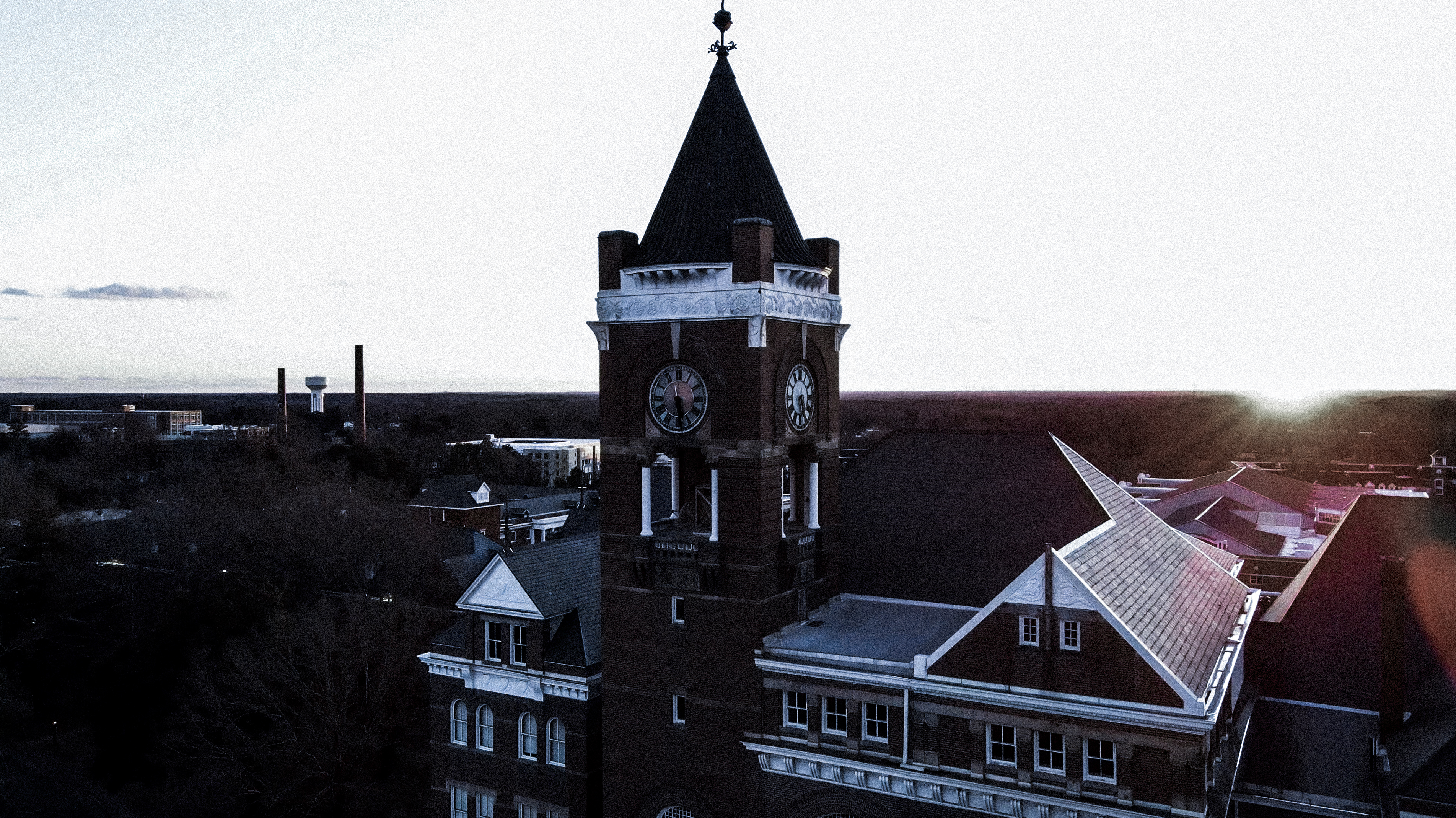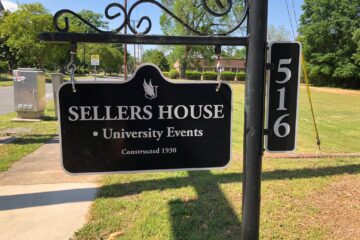In light of Halloween quickly approaching, it seemed fitting that The Johnsonian covers what places around Winthrop’s campus are spooky enough to give guests a thrill while there. But beware — some places have otherworldly occupants that might come out to greet their visitors.
The Little Chapel next to the Campus Green is one of Winthrop’s oldest structures. It was the original building for Winthrop University in Columbia, and it was moved brick by brick to the Rock Hill campus by founder David Bancroft Johnson. Today, Johnson and his wife are buried under the floor of the Little Chapel. While the chapel is normally locked, students have reported that they can hear conversations and movement coming from the empty chapel.
Tillman Hall is perhaps one of the most unsettling buildings on Winthrop’s campus. From its creaking floors to the prisoner stocks in the basement, Tillman has a reputation for giving students chills. The oppressive silence one experiences when entering the building does not help matters; quiet weighs on Tillman’s visitors like a blanket, as if something (or someone) is discouraging interruption.
Richardson Hall is one of Winthrop’s most well-known residential buildings. The only co-ed residence hall for lowerclassmen, Richardson has welcomed countless students into the folds of Winthrop society. Generations of students have done their laundry in its basement, where locked doors hide secrets, the nature at which students can only guess. Many students have reported that they experience the feeling of being watched while in Richardson’s basement — some going as far as to say that shadowy figures stalk the laundry room. Whether or not this is the case, there is a sneaking feeling of not being alone after stepping off the elevator.
Bancroft Hall is the university’s original student housing and is used for classrooms currently. While the building has been modernized, one can still see the skeletal remains of the dormitories. Classrooms are split in half by beams laid in the floor and walls — the evidence of it once being two bedrooms. Sitting alone in a classroom for long feels as though one is trespassing, as though the ghost of one of Winthrop’s early students is upset with having an unannounced guest in her bedroom.
The Rutledge Building was Winthrop’s original library (called the Carnegie Library until 1969). Today, it houses the campus’s fine arts department, classrooms, as well as student galleries. Students in the past have commented on how they never feel quite alone when working late at night in the studios. It feels as though there is a spectral spectator just out of sight.
The Withers Building — formerly known as the Winthrop Training School — has been the home of Winthrop’s education training since the building was purchased in 1910. It has housed Winthrop’s laboratory schools since then (first a school encompassing all ages before transitioning to the modern Macfeat Early Childhood Laboratory School), providing future educators the opportunity to interact with students before graduating. Before Winthrop purchased the building, it was a boys’ high school and military training academy. Today, students can hear murmurs and the sound of hard shoes on the main staircase even after class times have ended for the day. Perhaps modern students are hearing a century’s worth of young adults coming and going from their own ghostly classroom.
While not necessarily haunting in nature, there is something unnerving about the university’s energy plant. The Central Energy Plant was constructed in 1964 in order to bring steam power to the campus, leading to grates billowing smoke on winter mornings. Hearing the hiss of the broilers and seeing steam rise from the ground beside the amphitheatre is enough to raise the hairs on the backs of students’ necks.
Similar to the Central Energy Plant, McBryde Hall does not necessarily unnerve students with ghostly activity. However, the medieval-inspired architecture and dramatically vaulted ceiling create a sense of gothic horror. One can almost visualize Mary Shelley using this building as inspiration for her writing or directors of silent films using it as a backdrop for the dramatic climax.
The President’s House has served as living quarters to each of Winthrop’s presidents since the university’s inception. The dark brick facade has lent the home an air of drama, especially as the sun sets. However, the President’s House holds a sinister secret — people have died inside. David Bancroft Johnson — Winthrop’s founder and first president — died in the home in 1928. While only the former presidents can say if this has created a creepy atmosphere, it still is chilling to consider.
While it is technically part of two buildings, the annex is considerably more frightening than the buildings it connects. Built to connect Bancroft and Owens Halls, the annex has the makings of every classic horror movie — creaking floors, dimly lit hallways, and a sense of foreboding. One can almost imagine a villain lurking in the shadows, waiting for an unsuspecting student to let their guard down. The creaking of the floors only amplifies the sound of footsteps, begging the question: are they yours, or is someone else there?




